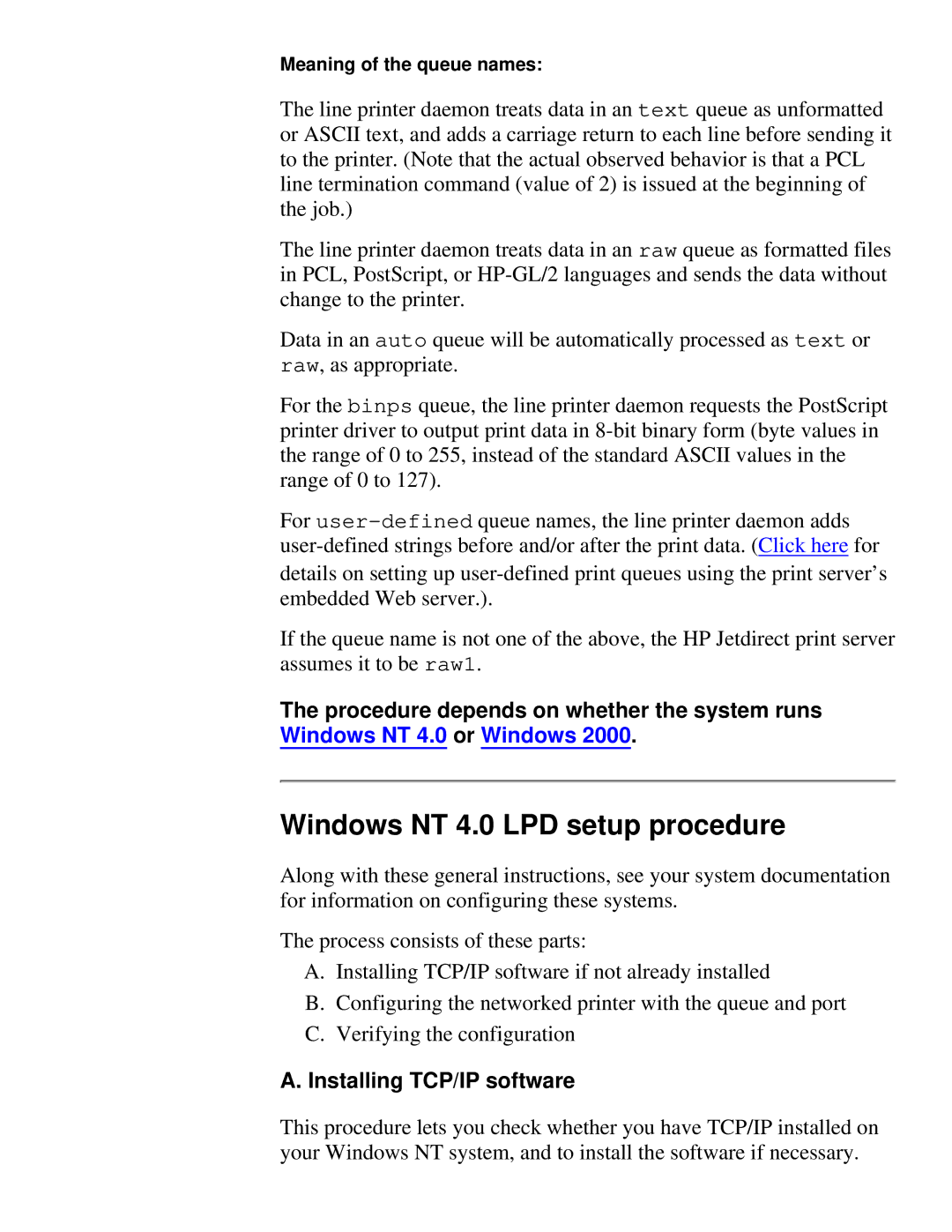Meaning of the queue names:
The line printer daemon treats data in an text queue as unformatted or ASCII text, and adds a carriage return to each line before sending it to the printer. (Note that the actual observed behavior is that a PCL line termination command (value of 2) is issued at the beginning of the job.)
The line printer daemon treats data in an raw queue as formatted files in PCL, PostScript, or
Data in an auto queue will be automatically processed as text or raw, as appropriate.
For the binps queue, the line printer daemon requests the PostScript printer driver to output print data in
For
If the queue name is not one of the above, the HP Jetdirect print server assumes it to be raw1.
The procedure depends on whether the system runs Windows NT 4.0 or Windows 2000.
Windows NT 4.0 LPD setup procedure
Along with these general instructions, see your system documentation for information on configuring these systems.
The process consists of these parts:
A.Installing TCP/IP software if not already installed
B.Configuring the networked printer with the queue and port
C.Verifying the configuration
A. Installing TCP/IP software
This procedure lets you check whether you have TCP/IP installed on your Windows NT system, and to install the software if necessary.
